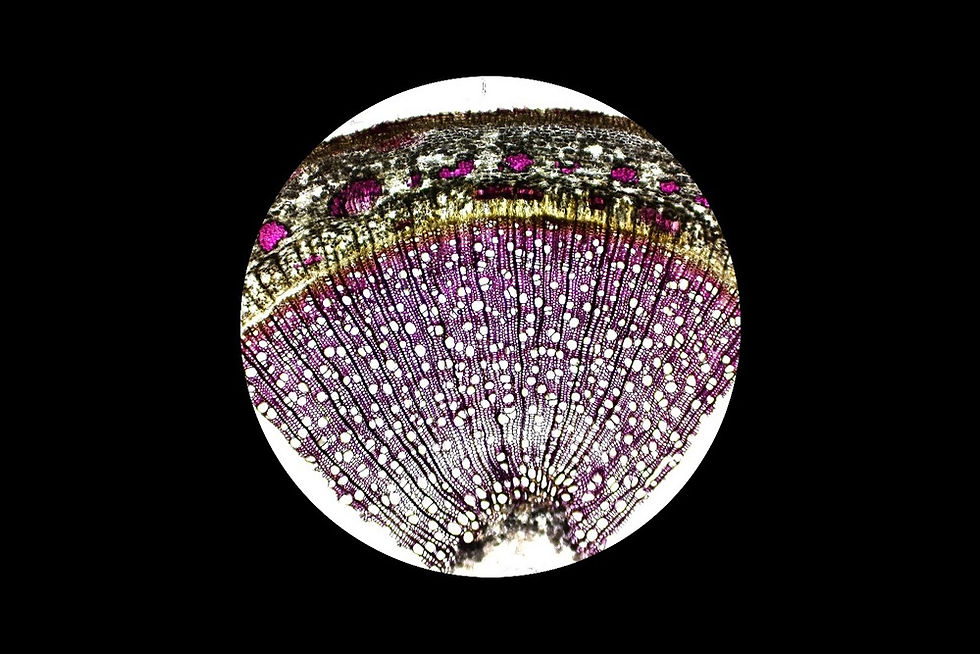Poplar-tree discovery could help shape the future of energy, biomaterials
- Eric Stann, University of Missouri
- Aug 25
- 4 min read

A new study led by researchers at the University of Missouri has uncovered how poplar trees can naturally adjust a key part of their wood chemistry based on changes in their environment.
This discovery—the result of a collaboration with scientists at Oak Ridge National Laboratory and the University of Georgia—could help create better biofuels and other sustainable products.
Lignin is an abundant natural substance found in almost every plant containing stems, roots and leaves.
It helps plants stay upright, move water and protect themselves from temperature changes and other environmental factors.

“Lignin acts as both a glue and an armor—it holds everything together while also protecting the plant from outside stressors,” said Jaime Barros-Rios, an assistant professor of plant molecular biology. “Understanding how plants make lignin could help us improve its conversion into high-value biomaterials and improve the competitiveness of U.S. biorefineries.”
Why poplar trees?
Poplars are already being used in the paper and pulp industry.
Now, they’re being explored as a source of bioenergy—fuels, plastics and other bioproducts made from plants instead of oil.
Poplar trees are also useful for scientific research because their genome has been fully mapped.
This additional knowledge allowed Barros-Rios, his team at Mizzou’s College of Agriculture, Food and Natural Resources, and external collaborators, to discover that the chemical makeup of lignin changes based on a tree’s latitude, or how far north or south it’s located from the equator.

The researchers examined 430 wood samples from Populus trichocarpa, a poplar tree species that grows primarily in western North America from northern California to British Columbia in Canada.
The trees growing in warmer climates produced lignin with a higher ratio of syringyl-to-guaiacyl (S/G)—two key chemical building blocks called monomers—compared with those from colder climates.
“This S/G ratio represents the proportion between the two most abundant monomers in lignin,” said Weiwei Zhu, a postdoctoral researcher in the Barros-Rios lab and lead author of the study. “These monomers have slightly different chemical structures, impacting the properties of the wood and directly influencing how easily lignin can be broken down and processed—making it easier to create biofuels and a wide variety of everyday products.”
Surprise discoveries
In addition to the genetic study, the research team used 3D computer modeling to better understand their findings.
“We identified a mutation in an important cell-wall enzyme in poplar trees called laccase, which was found to control the S/G ratio in this natural population,” said Rachel Weber, a senior biochemistry student at Mizzou who built the model. “So, I was able to utilize a protein structural-modeling software called ColabFold to pinpoint the exact location of this mutation within the laccase protein.”
To the team’s surprise, the mutation didn’t show up within the active center of the protein—suggesting that the deposition of lignin in natural settings may be regulated by still uncharacterized signaling pathways, Weber said.
“This points to a more complex regulation than we initially thought and gives us new clues about how trees adapt and protect themselves,” she said. “This knowledge will help us develop additional hypotheses about how this protein functions and interacts with the plant’s surrounding environment.”
In another unexpected discovery, the team found trace levels of a rare form of lignin—called C-lignin—in poplar trees.
Previously, C-lignin was only known to be present in the seeds of a few plants, such as vanilla and cacti.
Because C-lignin is simpler and more uniform than regular lignin, it’s easier to break down and process into usable plant material for bioplastics, biofuels and other renewable products.
“This type of lignin could help us turn plant biomass into valuable commodity chemicals more efficiently,” Barros-Rios said.
Looking ahead, Mizzou’s team is now working to genetically engineer poplar trees and soybeans so that they can contain more C-lignin—making the biomass of these plants easier to process in next-generation biorefineries.
The study, “Factors underlying a latitudinal gradient in S/G lignin monomer radio in natural poplar variants,” was published in the journal Proceedings of the National Academy of Sciences.
Co-authors are Yen On Chan and Ganesh Panzade at the MU Institute for Data Science and Informatics; Trupti Joshi at the Christopher S. Bond Life Sciences Center and Mizzou’s Department of Biomedical Informatics, Biostatistics and Medical Epidemiology; Jin Zhang, Mengjun Shu, Connor Cooper, Russell Davidson, Jerry Parks, Gerald Tuskan and Wellington Muchero at Oak Ridge National Laboratory; Richard Dixon at the University of North Texas and Pradeep Kumar Prabhakar and Beeanna Urbanowicz at the University of Georgia.


































